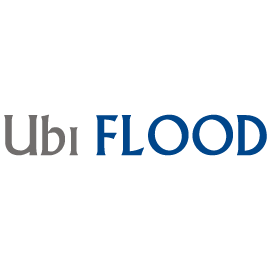Flood warning systems, flood forecasting, SCADA, ICT, ubiquitous computing, sensors, distributed approach.
ABSTRACT
Floods in Asia represent the first natural hazard. During the last five years, major events have affected more than 600 millions in Asian countries and constitute one of the main obstacles to the economic and social developments. In order to address part of the flooding challenge, the use of ICT can be promoted according to the type of flooding and local situation of IT environment. In a very classical approach like the SCADA systems, most of the decision making process takes place after a centralization of data and some simulations produced by one or several models.
In such case, the reaction time requests at least several minutes which are already longer than the flooding process that may append in less than 10 minutes after the start of the rain. The UbiFLOOD project deals with implementation of ubiquitous computing in flood warning and forecasting systems in different Asian background and the aim of the UbiFLOOD project is to implement ubiquitous solutions in the existing flood warning and forecasting systems. As an outcome, the framework will be developed with the main purpose to alert the population regarding flood alert. Since ubiquitous computing in flood warning systems is not widely applied in Asia, the new proposed solution within the framework should result in better operational organization and management of warning systems.
THE UBIFLOOD APPROACH
In order to explore the new possibilities offered by the ubiquitous approach, a research project called UbiFLOOD has been launched with the objectives to develop some ubiquitous approach in different Asian cities which are exposed to regular flooding events. Case study areas within the project are Bangkok, Mumbai and Singapore. The common characteristics for selected cities are that they are in monsoon region and that they have a history of flooding problems. However characteristic of flood events are very different (from slow to extremely fast) and require specific answers…
… In order to validate the concept, a prototype based on Ijinus communicating sensors wireless ultrasonic numerical level probe – has been developed and tested in laboratory, in Singapore. Some videos of the conducted experiments are presented on the UbiFLOOD website and describe how the data acquisition process is able to send a alert message to a mobile phone according to the defined rules…
CONCLUSION AND PERSPECTIVES
The ubiquitous approach supported by new sensors and interfaced with communicating devices allows potentially reshaping the flood warning systems and could provide an efficient answer for flood events such like in Singapore where the concentration time doesn’t exceed 10 minutes. The communicating capacity of the individual devices allows communicating immediately to the exposed population and to inform about on-going risks. However, this progress needs to be associated to a very careful definition of the messages to send to the population in order to generate the proper reaction. At the same time, the data collection has to be carried out in order to nourish a knowledge base which is the key reference for establishing the rules for issuing warning messages. In such context, the future of warning system has to be seen as a combination of the traditional SCADA approach combined with the ubiquitous devices.
The upcoming developments of the UbiFLOOD project will allow to explore further these tracks and to evaluate the practical implementation of such solution in Asian cities. The next step for the project is to implement in each sensor the possibility to run a simplified hydraulic models able to identified the closest flood map to the on-going situation and to send an alert message according to the exposed persons. This last step will strongly improve the efficiency of the disposal and will allow to reach a better awareness of the population. The key question of the mobile devices – mainly mobile phones – used by the population and their heterogeneity will remain and represent a large domain for investigation and experiments …
Using Ijinus battery operated wireless water level sensors …
Read full review on Wikhydro.developpement-durable.gouv.fr

